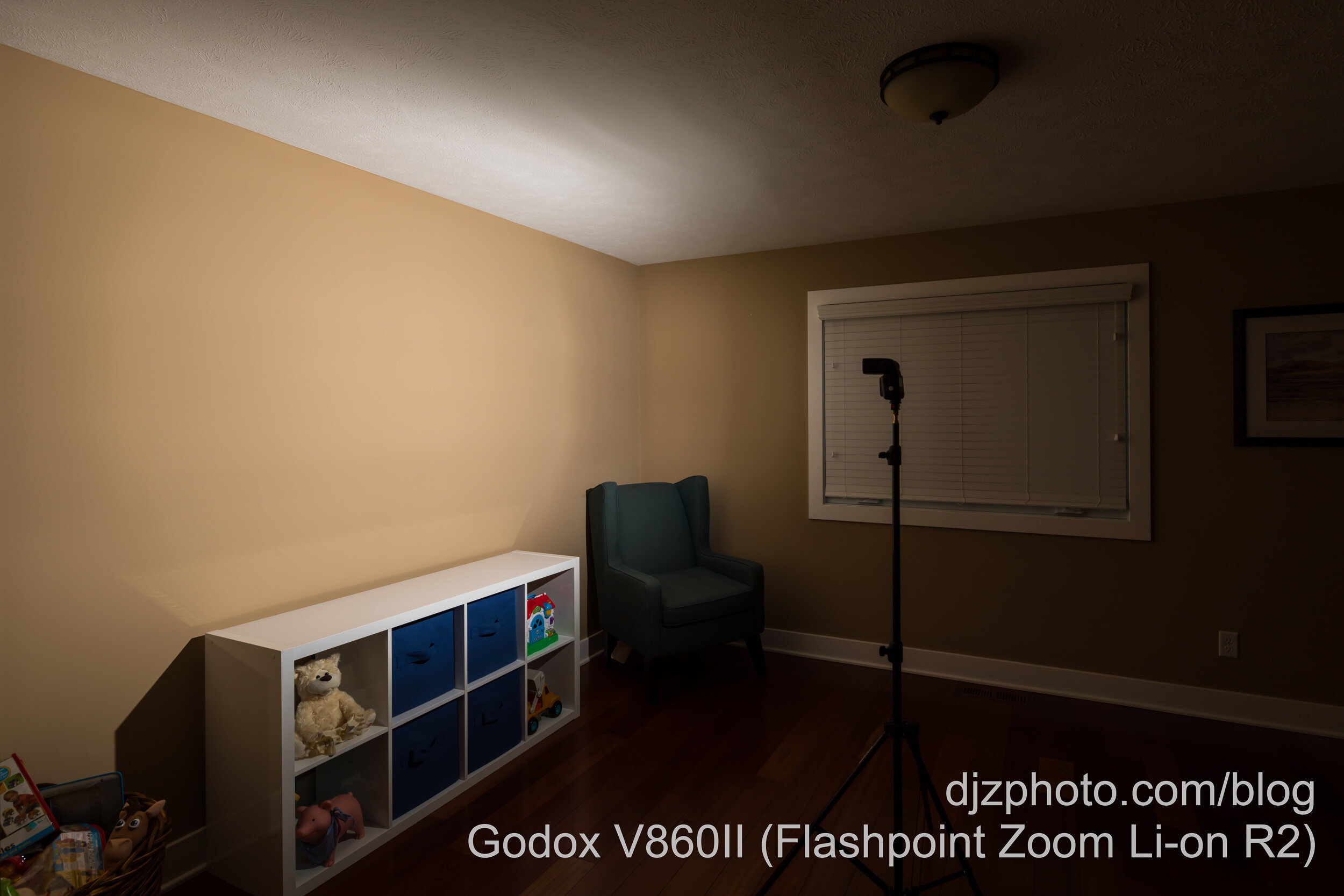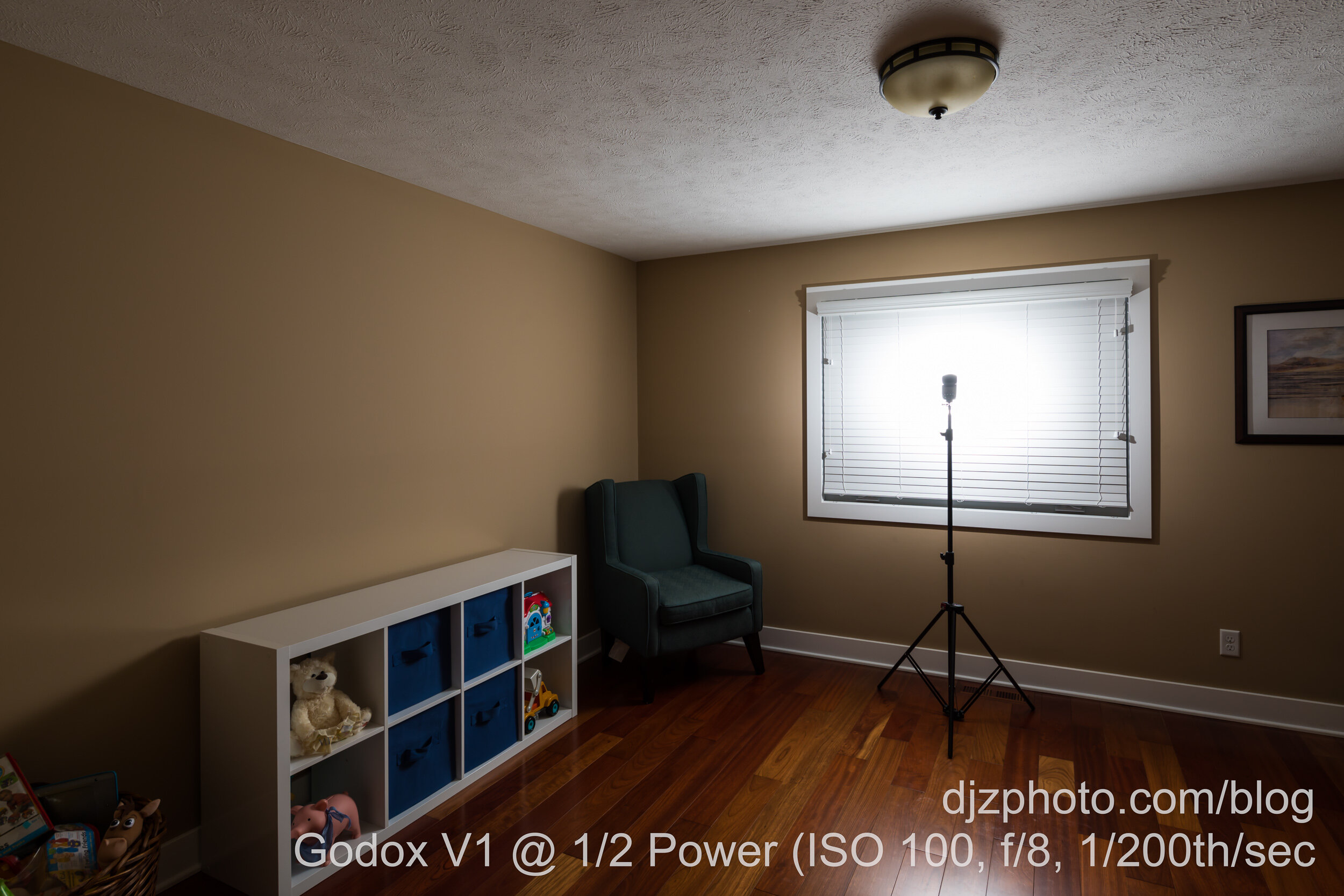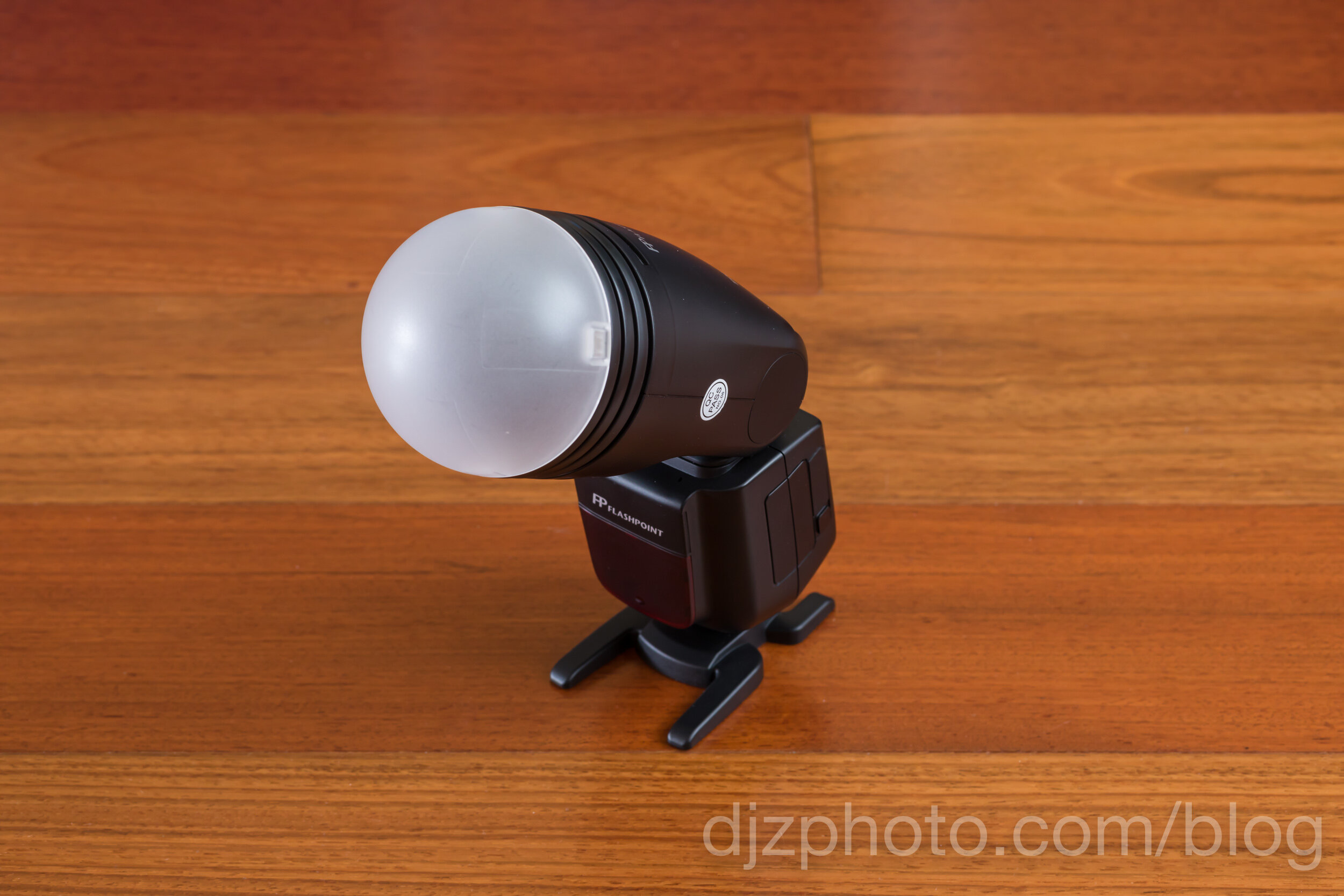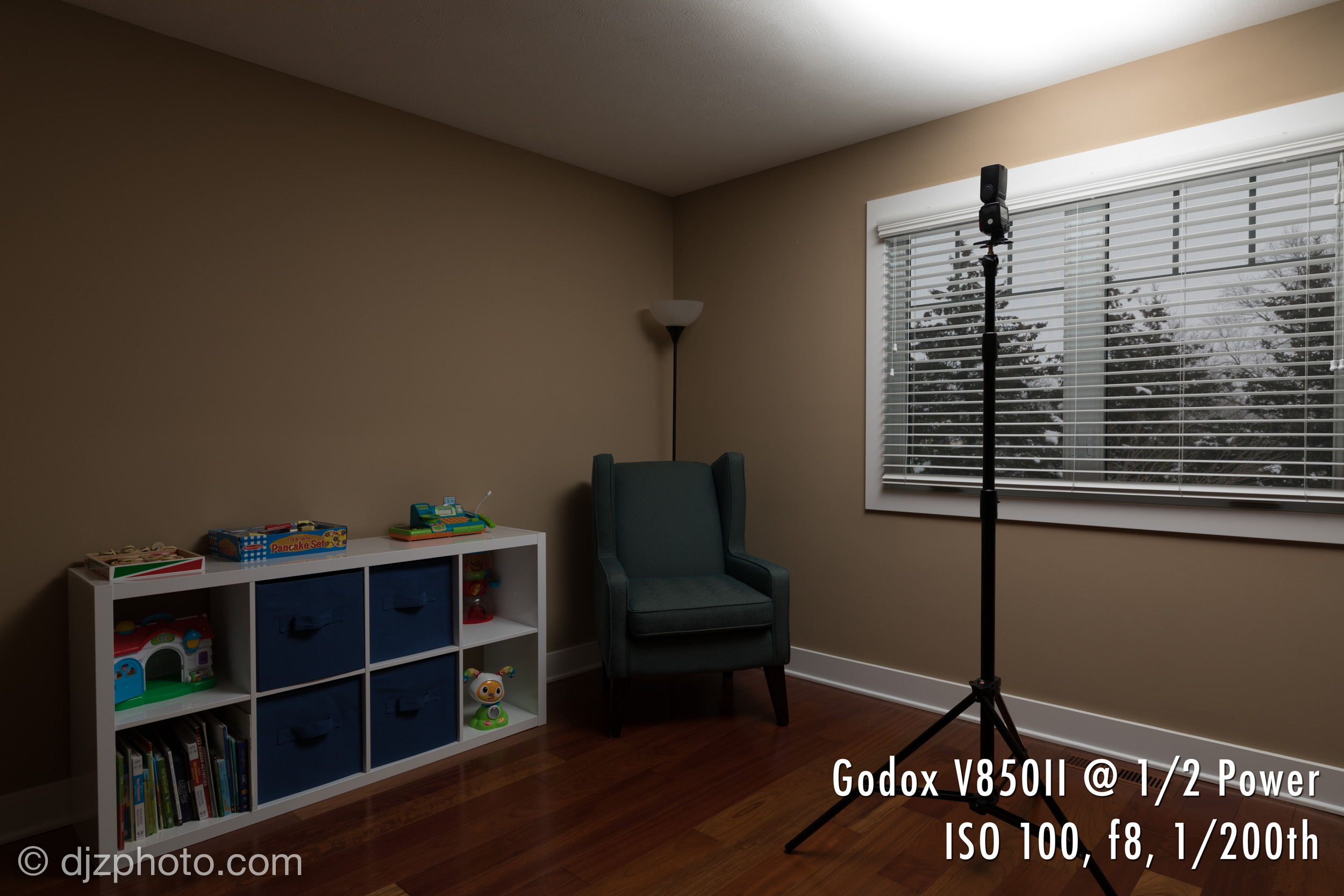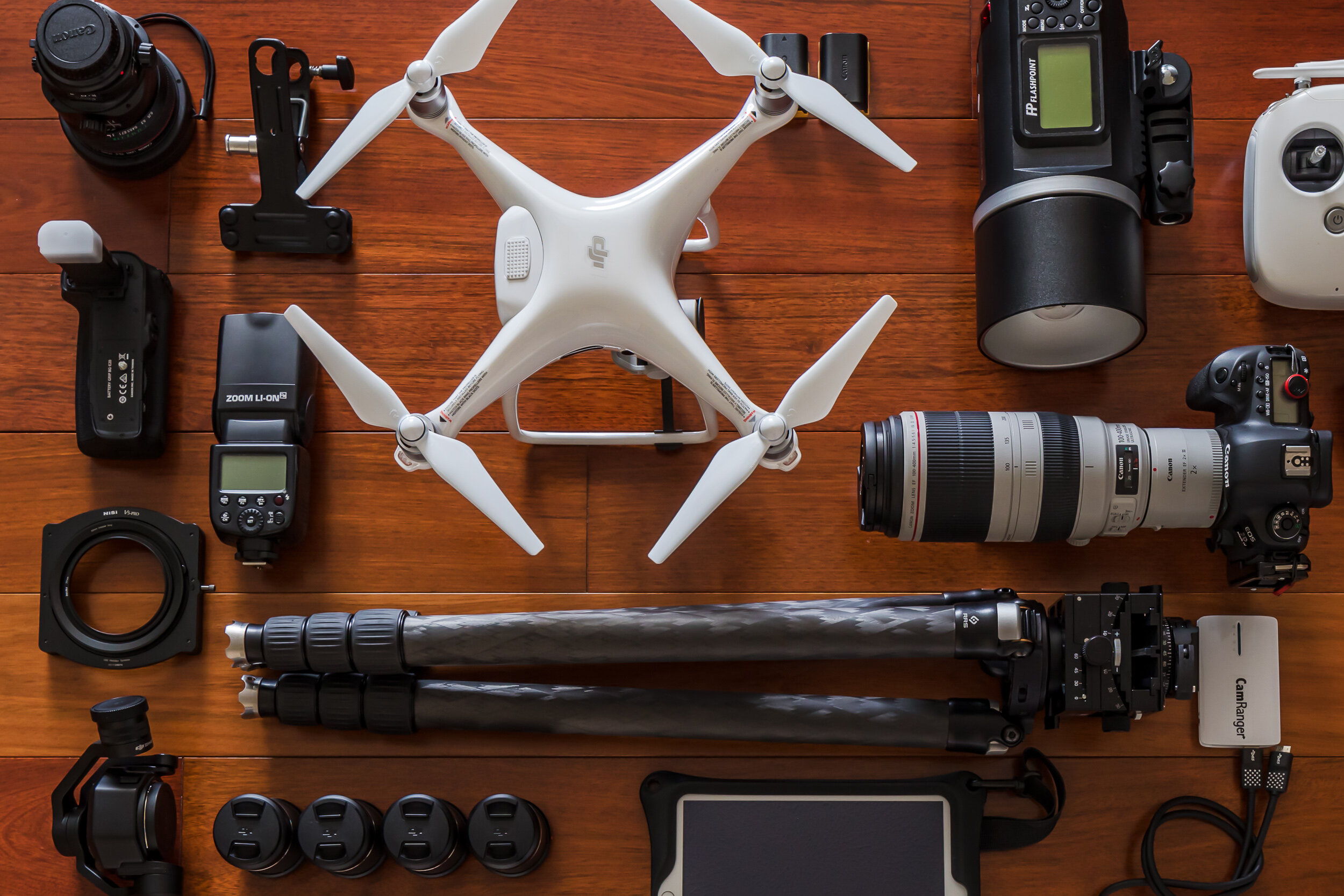
Camera & Drone Gear Blog
Info, Reviews, Comparisons, & News
If You're Shooting Architecture or Real Estate, Omni-Directional Lighting is Your Friend
A look at the benefits of using omni-directional globe lanterns for architecture.
- For when natural light or flash ceiling bounces won’t cut it -
See Also:
What Equipment Do I Use? Taking a Look at Lights
The Many Faces of the Godox AD200
Godox V860II Flash vs. Godox V1
( This page contains links to products, so if you find this site useful and use a link to make a purchase, I’ll get a small commission. As an Amazon Associate I earn from qualifying purchases. Thanks!)
I’ve been photographing architecture and real estate for several years. When I first started, I shot natural light only (using no flashes or lighting). This means I set my camera on a tripod, and for each image I wanted to produce I would take multiple exposures with varying shutter speeds to capture a wide dynamic range on site. Then at home on my computer, I would merge the exposures either manually or with HDR software. This approach can be helpful in some ways, but after a while I wanted to produce higher quality images with more control over how they look. I eventually started shooting with multiple lights, typically using walls and ceilings to bounce light.
Bouncing lights off walls and ceilings is great! They are like great big reflectors that produce soft light for your architectural scene. But what do you do when you encounter a scenario with dark wood or dark paint colors everywhere? I’d arrive at a location, and as I was walking up to the door I’d think to myself, “Oh buddy, this place looks huge! I hope they have white ceilings!”
I didn’t really know the best way to approach large spaces with dark walls and ceilings initially, so I started with the traditional classic: shoot-through umbrellas (STU’s). They are fairly multi-directional, but you don’t get an even spread of light to the sides of the STU, and half the light bounces backwards away from your scene. They can also be a bit awkward if you’re trying to hand-hold them. There are some STU’s & umbrella-like softboxes that resolve the backwards loss of light by including a reflective silver backing, such as the Westcott Round Halo. I didn’t buy those because I was looking for something I could hand-hold and fit through doors easily, and something that produced a more even spread of light to all sides.
After trying out STU’s, softboxes, beauty dishes, & bounce umbrellas (all which are wonderful for many uses other than large architectural spaces), I discovered globe lanterns. I have been using them on my Godox AD600’s, and if you want to send light evenly throughout a large space, there’s nothing better! You just twist off the basic reflector, unfold the lantern, and twist it on.
In some of the flash images you might see me holding a “light on a stick,” which consists of a Wooster Sherlock Extension Pole, a Godox V1 or V860II (see my other article for more information on that), and a cold shoe flash stand adapter. Depending on whether I’m using the Godox V1 or V860II, I often use a Gary Fong Diffuser or the Godox AK-R11 Dome Diffuser. When I want to produce light in smaller spaces where a giant globe lantern wouldn’t be practical or possible, the “light on a stick” saves the day!
I wish someone had told me about omni-directional diffusers when I first started using flash! If you’re just starting out and weren’t sure how to approach architectural spaces where natural light isn’t great and ceiling bounces won’t work very well, I hope you found this information useful. I certainly would have! =)
Omni-Directional Diffusers Used in the Images Above
Godox V860II Flash vs. Godox V1 (A.K.A. Flashpoint Zoom Li-on X R2) Comparison
A look at the differences between the Godox V1 and the Godox V860II, with a brief look at the Godox AK-R1 Accessory Kit for Round Flash Head.
(And a brief look at the Godox AK-R1 Accessory Kit for H200R Round Head)
See Also: What Equipment Do I Use? Taking a Look at Lights
When you are deciding what speedlight to buy, it’s extremely helpful to see some of your options in action. This post takes a look at the Godox V860II (same as the Flashpoint Zoom Li-on R2 sold by Adorama) and the more recently released Godox V1 (same as the Flashpoint Zoom Li-on X R2 sold by Adorama). At the time of this writing, the Godox V1 sells for $259 (has TTL & there is no cheaper manual-only version) while the V860II TTL sells for $179, or $139 for the manual-only version (the manual version is called the V850II and the TTL version is called the V860II). So what’s the difference between the V1 and the V860II?
(Note: This page contains links to products, so if you find this site useful and use a link to make a purchase, I’ll get a small commission. As an Amazon Associate I earn from qualifying purchases. Enjoy!)
Here are some of the more important specs for comparison purposes (click on the titles at the top to see similarities & differences):
After looking at the specs for these two lights, the item that stands out most to me is full power flashes per charge. It’s fascinating that the older V860II gets 650 full-power flashes on a 2000mAh battery, and the new V1 gets 480 full-power flashes on a 2600 mAh battery. This means that the V1 uses more power per flash, which is probably related to the fact that the head is bigger, and they designed it to produce a wide and smooth light with a gradual falloff.
I wanted to compare the light output of the flashes in two ways: brightness and balance. Let’s take a look at balance first.
As you can see in the images above, the Godox V1 has a smooth & gradual light fall off, with no lines and without contrasting bright and dark areas. The Godox V860II clearly shows the pattern of the fresnel head, with a large bright circle in the middle, and then sudden and contrasting waves of uneven light. This is not important if you are using light modifiers or bouncing off walls, but if you plan on using direct flash without a softbox, umbrella, or omnidirectional dome diffuser, then this can become a consideration. It is also important to remember that if you add a light modifier like a softbox, you will be reducing the brightness of the light dramatically.
Next, let’s compare brightness.
When bouncing off a white object like these white blinds, the brightness of the Godox V860II and Godox V1 are very similar. It seems that the V860II is less than 0.3 of a stop brighter, so if you are using umbrellas, reflectors, or walls for bouncing light, you probably won’t notice much difference between the two.
It’s All About the Round Head
The difference between the Godox V1 and the Godox V860II all comes down to that round head. Besides having a smoother & more balanced light output, the round head also makes it possible to use the Godox AK-R1 Accessory Kit for Round Flash Head. It’s a magnetic ring system that makes the various accessories super quick and easy to mount or even stack. It comes with a few color filters, a grid, a snoot, a bounce card, barn doors, and an omnidirectional dome diffuser.
Having used both lights quite extensively for architectural interiors (along with a few other Godox lights), I have found the magnetic system to be very convenient and even time-saving. With the Godox V860II, if I wanted to use a grid, color filter, or go omnidirectional, I would use little velcro straps to attach things that wouldn’t sit perfectly flush or straight. I often had light leaking out the sides of color filters, then I’d fiddle around with them over and over. With the magnetic ring system on the Godox V1, the grids, filters and dome diffusers are super quick to attach and solid as a rock, with no light leak and no worries that you are going to bump them out of alignment. If you want additional filter colors, it’s easy to cut a circle from a color filter sheet, or even buy the Godox Color Effects Set for Round Flash Heads. The AK-R1 Round Head Accessory Kit also works with the AD200 H200R Round Head.
So, should you buy the Godox V1, or the cheaper Godox V860II? I think the answer is: it depends.
Buy that shiny new Godox V1 if:
you have traditional speedlight accessories and are sick of fiddling around with velcro or rubber straps
you don’t have a speedlight yet but want one with an accessory system that’s quick and easy to manage
you plan on using a lot of direct, unmodified flash
the round head accessory kit looks sweet
Save money and get the Godox V860II if:
you never use small modifiers
you only bounce off walls, umbrellas, and other reflectors
you never use direct, unmodified flash
you already have a bunch of traditional speedlight accessories and modifiers that you like
I hope this article helps clarify the main differences between these two lights. The V860II is definitely not being replaced by the V1… it is still a great cost-effective option to consider for many people looking at purchasing a new speedlight.
Below are some of the products mentioned in this article:
Accessories & Modifiers for traditional speedlights:
What Equipment Do I Use? Taking a Look at Lights
After some recent emails from other photographers asking me what flashes/strobes/lights I use, I thought to myself, "Hey, if I get questions about lights, it must be interesting enough to make a blog post!" In this review & comparison I'm going to take a look at the lights I use, how bright they are, and what their light spreads are like for direct flash use.
Note: For more AD200 info, see my newer post: The Many Faces of the Godox AD200
For more speedlight info, see my newer post, Godox V860II vs. the Godox V1
After some recent emails from other photographers asking me what flashes/strobes/lights I use, I thought to myself, "Hey, if I get questions about lights, it must be interesting enough to make a blog post!" In this review & comparison I'm going to take a look at the lights I use, how bright they are, and what their light spreads are like for direct flash use. Since the transmitters come in different versions for different brands of cameras, I'll put links to all the different versions at the bottom of the page to make them easy to find.
If you find this comparison useful and are thinking of buying, you can get me a small commission by using the links on this page. As an Amazon Associate I earn from qualifying purchases. Thanks!
All the lights I currently use are made by a company called "Godox," but are rebranded under Adorama's "Flashpoint" brand. These lights are decent in quality while not being too expensive. I buy the "Flashpoint" branded flashes instead of the "Godox" branded ones because if it says "Flashpoint" it means I get a U.S. warranty. Since I live in the U.S. I went with those. In this post I refer to the Godox models since they are more widely recognized and the names are a bit simpler.
I currently own two Godox V850II's, two Godox AD200's, and two Godox AD600's. I trigger them with an X1 Wireless Flash Trigger in the camera's hotshoe and control the power of the flashes with an XPro (I used to have an XT32 before the XPro was released) that I keep on me as I walk around moving light stands. The only time the X1 Trigger affects flash power is when you first turn it on, so the rest of the time it doesn't interfere with the settings I choose on the XPro. I never use TTL so I have the manual only, non-TTL versions of all the lights except the AD200, which doesn't come in a manual-only version.
The Godox V850II Li-ion Camera Flash is a speedlight that is powered by a lithium-ion battery, which is a breath of fresh air if you've previously used flashes powered by AA batteries. These lithium-ion batteries are rated to last for 650 full power pops (and I never use lights at full power). I use this primarily for ceiling/wall bounces in small rooms or to highlight areas or objects in larger rooms where I'm also using bigger lights.
The Godox AD200 is a 200W strobe that is about a stop brighter than a normal speedlight. It comes with a detachable Fresnel head and a detachable bare bulb socket to allow for a little more flexibility. It readily accepts a variety of optional accessories made just for this model like a 12" beauty dish, standard reflector, umbrella reflector, dome diffuser, barn doors (included with the basic kit), and more. It is only slightly bigger than a speedlight, so many accessories made for speedlights will fit onto this when the Fresnel head is attached. One thing to note is the AD200 basic package does not include reflectors for use with the bare bulb. These lithium-ion batteries are rated to last for 500 full power pops.
The Godox AD600 is a 600W strobe / monolight that is much brighter, bigger, and heavier than a speedlight. These are great for throwing lots of light into a large room and useful for balancing interiors with exteriors on a sunny day. I often will hand hold these because it has a nice big handle that makes you feel like you're holding a giant photon gun, and when the light fires it goes "POP!" I have to say, even though it's heavy it is fun to walk around with these things. =) TSA also always enjoys scanning these if you ever take it as carryon in an airplane. Their typical question is, "What...IS...that???" These lithium-ion batteries are rated to last for 500 full power pops. The links to the AD600 on this page are to the Bowens Mount model, which is how accessories, like reflectors and beauty dishes, are attached to the light.
So how do these all compare?
In the first gallery below, I have these three flashes (the AD200 is in there twice, once with the bare bulb & standard reflector and once with the Fresnel head) all firing at 1/2 power with the camera set to ISO 100, f8, 1/200th of a second shutter speed:
As you can see the Fresnel head of the AD200 might be a hair brighter than the bare bulb. Otherwise, it all went as expected.
Next, I thought it would be useful info to see what power settings you'd have to use for all of the flashes to be throwing out approximately the same amount of light (they aren't exactly the same but they're close). Notice the flash power settings in the gallery below:
I also tried the AD600 at 1/8th power but it seemed too bright and was probably a bigger exposure difference than 1/16th +0.7.
The 3rd and final gallery takes a look at how even the light spread is from the various lights using various configurations (grid, softbox, diffusers, zoom level, Fresnel head, bare bulb, etc). To do this I turned the power down quite a bit so the bright and dark areas could be easily seen, which helps to show how even or uneven the light spread is. Noted in each image is the configuration:
Some observations from these galleries:
The AD600 is at least a stop brighter than the AD200, and the AD200 is about a stop brighter than the V850II speedlight
The V850II camera flash/speedlight requires a softbox to get a very even light spread, but the softbox knocks out about 1 stop of power
The AD200 bare bulb has a nice even light spread with both reflectors, but it's Fresnel head is not desirable for direct flash and is similar to a speedlight that is zoomed to at least 85mm
The AD600 light spread is not perfect, but comes close when using it's included detachable diffuser
I often use configurations that have uneven light spread when I'm bouncing from walls, ceilings or umbrellas, since bouncing softens and evens out the light source. That being said, it is nice to know what the light spreads look like for situations where direct flash is useful. I do like to use the direct flash of the AD200 bare bulb & standard reflector when doing twilight exteriors, because the AD200 is light enough to hold on the end of a light stand or painter's pole and has a very even light spread.
Below are the lights, transmitters, and a few other items I use. If you use the links on this page, it will help me out! =)
Links to Products Mentioned in this Article
Godox X1 Transmitter for Canon (the one I put in the camera hotshoe to trigger the flashes - Has TTL & HSS)
Godox X1 Transmitter for Nikon
Godox X1 Transmitter for Sony
Godox X1 Transmitter for Fuji
Godox X1 Transmitter for Panasonic/Olympus
Godox XPro Wireless Flash Controller & Trigger for Canon (The one I carry around to control the power of all my lights)
Godox XPro Wireless Flash Controller & Trigger for Nikon
Godox XPro Wireless Flash Controller & Trigger for Sony
Godox XPro Wireless Flash Controller & Trigger for Panasonic/Olympus
Godox XPro Wireless Flash Controller & Trigger for Fuji
Godox AD600 (doesn’t include transmitter)
Spare Battery for the AD600
Godox AD200 (Doesn't include transmitter or bare bulb reflectors)
Godox AD200 Standard Reflector (More directional than the umbrella reflector)
Godox AD200 Umbrella Reflector (Slightly wider spread than the standard reflector)
Godox AD200 12" Beauty Dish
Spare Battery for the AD200
Godox V850II Speedlight (non-TTL manual version)
Westcott 8x12" Pocketbox (Softbox for speedlight or AD200 with Fresnel head)
Spare Battery for the V850II
If you do use TTL, you'd want to look at the V860II instead of the V850II. It's the exact same thing except with TTL. Below is the link:
Godox V860II TTL On-Camera Flash Speedlight
*February 2021 Update: Upgrades!!!*
I originally wrote this article in 2018, and I figured I would have to eventually update the article with new products. While I personally still use the lights I originally wrote about, Godox has updated their lineup to include “Pro” models that have improvements over the originals, and also the new round-head speedlight. The power comparisons are still valid in terms of how much brighter each of the classes of lights are, but there are even more shapes and sizes to pick from!
See also my other article about the speedlight differences: Godox V860II vs. the Godox V1
Here are some of the new models:
Godox AD200 Pro (AKA Flashpoint eVOLV 200 Pro)
Godox AD300 Pro (AKA Flashpoint XPLOR 300 Pro)
Godox AD400 Pro (AKA Flashpoint XPLOR 400 Pro)
Godox AD600 Pro (AKA Flashpoint XPLOR 600 Pro) with Canon R2 Pro Transmitter
Godox AD600 Pro (AKA Flashpoint XPLOR 600 Pro) with Nikon R2 Pro Transmitter
Godox AD600 Pro (AKA Flashpoint XPLOR 600 Pro) with Sony R2 Pro Transmitter
Got a bunch of lights and not sure what to carry them in? See also my review and photos of the Pelican Air 1607 Protector Case, with up close photos before and after I load it up with my gear.
























